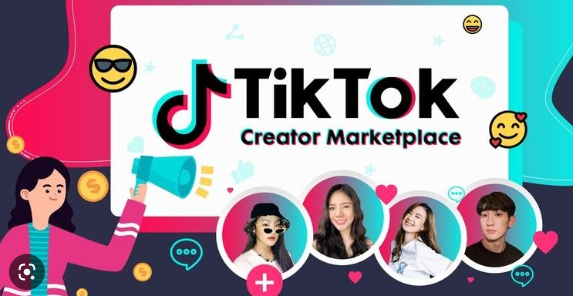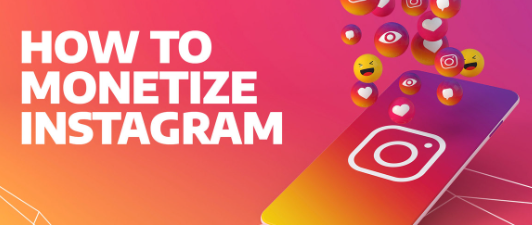
As the saying goes, "content is king," and it couldn't be more true in today's digital age. With the rise of social media, blogs, and other online platforms, creating high-quality content has become essential for businesses and individuals looking to connect with their audiences and stand out from the competition. We'll explore Content Creation at depth in this article.
In this guide, we'll cover everything you need to know about content creation, from understanding your audience to optimizing your content for search engines. Let's dive in!
Spotlight: If you're a content creator then you need the right tools to build, grow, and manage your thriving knowledge business. Teachable is the best online resource for new and expert content creators. See for yourself.
Understanding Your Audience
Before you start creating content, it's important to have a clear understanding of who your target audience is. Who are you creating content for? What are their interests, pain points, and motivations? By understanding your audience, you can create content that resonates with them and drives engagement.
Know Your Demographics
Knowing your audience demographics will help you tailor your content to their specific interests and needs. Gather information on your audience's age, gender, location, income level, education level, and more. This information can be gathered through surveys, social media insights, or analytics tools.
Define Your Buyer Persona
Once you have an understanding of your audience demographics, it's time to create a buyer persona. A buyer persona is a fictional representation of your ideal customer. It includes information such as their goals, challenges, and preferences. By creating a buyer persona, you can create content that speaks directly to your target audience.
Research Your Competition
Researching your competition can also give you insight into what kind of content your audience is interested in. Look at what your competitors are creating and identify gaps in their content strategy that you can fill with your own content.
Creating a Content Strategy
Once you understand your audience, it's time to create a content strategy. A content strategy is a plan for creating and distributing content that aligns with your business goals and meets the needs of your audience.
Set Your Goals
Start by setting specific goals for your content. Are you looking to increase website traffic, generate leads, or boost brand awareness? Your goals will guide your content creation efforts and help you measure the success of your content.
Choose Your Content Types
There are many different types of content you can create, including blog posts, videos, social media posts, infographics, and more. Choose the content types that align with your goals and resonate with your audience.
Create a Content Calendar
A content calendar is a schedule of when and where you'll publish your content. Use a content calendar to plan out your content in advance, stay organized, and ensure you're publishing content consistently.
Writing High-Quality Content
Once you have a content strategy in place, it's time to start creating high-quality content that engages your audience and drives results.
- Be original: It's important to create original content that is not a copy of someone else's work. Original content is not only more valuable to your readers, but it's also more likely to be shared, linked to, and cited by other websites.
- Use relevant images: Using images in your content is a great way to break up long blocks of text and make your content more visually appealing. However, make sure the images are relevant to your content, and are of high quality.
- Write for your audience: It's important to write content that is relevant to your target audience. This means understanding their needs, interests, and pain points. You should also consider the level of knowledge your audience has on the topic you're writing about, and adjust your content accordingly.
- Use subheadings: Subheadings break up long blocks of text, making your content easier to read and more visually appealing. They also help to organize your content and make it easier to navigate.
- Make your content scannable: Most readers scan content rather than read it word for word. To make your content scannable, use bullet points, numbered lists, and short paragraphs. This will make your content more digestible and easier to read.
- Use data and statistics: Using data and statistics in your content can add credibility and make your content more informative. Make sure you use reliable sources for your data and statistics, and cite your sources.
- Edit and proofread: Before publishing your content, make sure you edit and proofread it thoroughly. This will help you catch any typos, grammatical errors, or inconsistencies in your content. You can also consider using tools like Grammarly or Hemingway to help you edit your content.
- Use keywords strategically: While it's important to use keywords in your content for SEO purposes, it's also important to use them strategically. Don't stuff your content with keywords, as this can hurt your SEO and make your content look spammy. Instead, use keywords naturally and strategically throughout your content.
- Use storytelling: Storytelling is a powerful tool in content creation. It can help you connect with your readers on an emotional level and make your content more memorable. Consider using anecdotes, personal experiences, or case studies to add a storytelling element to your content.
- Stay up-to-date: Finally, it's important to stay up-to-date with the latest trends and developments in your industry. This will help you create content that is relevant and timely, and will keep your readers engaged. Consider subscribing to industry newsletters, attending conferences and events, or following thought leaders in your industry to stay up-to-date.
Pro tip: There's a reason why content creators flock to Teachable to launch and grow their thriving online businesses. Teachable is the best online resource for new and expert content creators. See for yourself.
Creating Visual Content
Visual content is an integral part of content creation. The use of visuals in content has been found to increase engagement, improve understanding, and boost retention. Creating visually appealing content can help capture the attention of your audience, convey your message effectively, and differentiate your content from others. Here are some tips to create compelling visual content:
- Choose the right type of visual content: There are various types of visual content, including images, infographics, videos, and GIFs. You need to choose the type of visual content that aligns with your content's message and purpose. For instance, if you are creating a tutorial or an explainer, you might want to use a video or an infographic. If you are trying to illustrate a complex concept, an infographic might be more effective than an image.
- Use high-quality visuals: Poor quality visuals can ruin the overall impact of your content. Always use high-quality visuals that are clear and visually appealing. Use high-resolution images and videos and ensure that they are optimized for the web to avoid slow page loading times.
- Make visuals easily shareable: Making visuals easily shareable can help increase the reach of your content. Add social media sharing buttons to your visuals so that readers can share them on their social media accounts.
- Incorporate branding elements: Visual content can also be used to strengthen your brand's identity. Incorporate your brand's colors, logo, and other design elements in your visuals to create a consistent visual identity across all your content.
- Use data to create infographics: Infographics are a great way to present complex data and information in a visually appealing format. Use data to create informative and visually appealing infographics that are easy to understand.
- Use animations and GIFs: Animations and GIFs can add an element of fun and creativity to your content. They can be used to illustrate a point, create a sense of urgency, or add humor to your content.
- Consider accessibility: It's essential to ensure that your visual content is accessible to everyone, including those with visual impairments. Use alt tags and captions to describe your visuals so that screen readers can convey the information to visually impaired individuals.
- Use templates: Using templates can save you time and help you create visually appealing content quickly. There are various templates available online for images, infographics, and other types of visual content.
- Use color psychology: Colors can evoke emotions and influence how your audience perceives your content. Use color psychology to choose the right colors for your visual content that align with your brand and message.
- Get feedback: Finally, it's important to get feedback on your visual content. Ask for feedback from your audience, peers, or professionals to get an objective opinion on the effectiveness of your visual content. Use this feedback to improve your future visual content.
In conclusion, creating visually appealing content is essential to engage your audience and differentiate your content from others. Using high-quality visuals, incorporating branding elements, and choosing the right type of visual content can help make your content more appealing and effective. Don't forget to make your visuals easily shareable, use data to create infographics, and consider accessibility. Finally, use templates, color psychology, and feedback to continually improve your visual content.
Optimize Your Content for SEO
- Understanding SEO and why it's important for content creation
- Conducting keyword research and incorporating keywords naturally
- Structuring content with headings, meta descriptions, and alt text for images to improve search engine visibility
Search engine optimization (SEO) is an essential aspect of content creation. It involves optimizing your content to rank higher in search engine results pages (SERPs). When your content is optimized for SEO, it becomes easier for people to find it online, which can help you attract more traffic to your website.
To optimize your content for SEO, you need to understand the basics of how search engines work. Search engines use complex algorithms to crawl and index websites, and they use a variety of factors to determine how to rank content in SERPs. Some of these factors include the quality of the content, the relevance of the content to the search query, and the authority of the website that hosts the content.
One of the most important things you can do to optimize your content for SEO is to conduct keyword research. This involves identifying the keywords and phrases that people are using to search for information related to your topic. Once you've identified these keywords, you can incorporate them into your content in a natural way.
Another important aspect of SEO is structuring your content properly. This includes using headings (H1, H2, H3, etc.), meta descriptions, and alt text for images. Headings make it easier for readers to navigate your content and help search engines understand the structure of your content. Meta descriptions are short blurbs that appear under the title of your content in SERPs and give readers an idea of what your content is about. Alt text for images helps search engines understand what the images on your website are about, which can improve your search engine visibility.
Measure Your Content's Performance
- Setting goals and metrics to measure the success of your content
- Analyzing data and making adjustments to improve performance
- Using tools like Google Analytics to track performance and gain insights
Measuring the performance of your content is important because it helps you understand what's working and what's not. By setting goals and metrics, you can determine what success looks like for your content and track your progress over time.
Some common metrics to track include website traffic, time on page, bounce rate, and social shares. By analyzing this data, you can determine which pieces of content are performing well and which ones need improvement. For example, if you notice that one of your blog posts has a high bounce rate, you may need to revisit the content and make adjustments to improve engagement.
One of the most powerful tools for measuring the performance of your content is Google Analytics. This free tool provides a wealth of data about your website, including traffic sources, user behavior, and conversion rates. By using Google Analytics, you can gain insights into how people are interacting with your content and make data-driven decisions about how to improve your content strategy.
In conclusion, content creation is a vital part of any successful digital marketing strategy. By following the steps outlined in this guide, you can create high-quality content that resonates with your target audience and drives results for your business. Remember to always put your audience first, focus on creating value, and be consistent in your content creation efforts. With time and effort, you can become a content creation pro and achieve your marketing goals.
Final Thoughts:
Content creation is a critical part of any digital marketing strategy. Whether you're looking to increase brand awareness, generate leads, or drive sales, high-quality content can help you achieve your goals. By following the steps outlined in this article, you can create effective content that resonates with your target audience.
Remember, the key to successful content creation is to always focus on your audience's needs and interests. By understanding what they want and delivering content that satisfies those desires, you can build trust, establish your brand as an authority, and drive engagement and conversions.
Additionally, don't forget to measure and analyze the performance of your content. This will help you understand what's working and what's not, so you can adjust your strategy accordingly. There are many tools available, such as Google Analytics and social media insights, that can provide valuable data to help you optimize your content.
In summary, content creation is an ongoing process that requires careful planning, creativity, and execution. By incorporating the tips and best practices outlined in this article, you can create content that engages your audience, drives traffic and conversions, and helps you achieve your marketing goals.
Reminder: If you're a content creator then you need the right tools to build, grow, and manage your thriving knowledge business. Teachable is the best online resource for new and expert content creators. See for yourself.
Frequently Asked Questions (FAQ)
What is content creation?
Content creation is the process of generating written, visual, or audio content for various mediums such as websites, blogs, social media, and more.
Why is content creation important?
Content creation is essential because it helps businesses and individuals to connect with their target audience and build brand awareness. It can also help improve SEO, drive traffic to websites, and establish a thought leadership position.
How do you come up with ideas for content creation?
There are various ways to generate ideas for content creation, including conducting research on your target audience, brainstorming sessions, analyzing industry trends, and reviewing competitor content.
What is the best type of content to create?
The best type of content to create will depend on your target audience and the goals of your content marketing strategy. However, commonly used types of content include blog posts, social media posts, infographics, videos, and podcasts.
How do you create high-quality content?
Creating high-quality content involves researching, planning, writing, and editing with the goal of providing valuable information that engages your target audience. It's important to use clear, concise language and to make sure that the content is well-structured and visually appealing.
How can I optimize my content for SEO?
To optimize your content for SEO, use relevant keywords and phrases throughout the content, including in the headline, subheadings, meta description, and body copy. Use alt tags for images, and make sure your content is mobile-friendly and has a fast loading speed.
What are the best tools for content creation?
There are various tools available to help with content creation, including content management systems (CMS), graphic design software, social media scheduling tools, keyword research tools, and more.
How often should I create new content?
The frequency of content creation will depend on your goals and available resources. However, it's generally recommended to create new content on a consistent basis to keep your audience engaged and to improve your SEO.
How can I measure the success of my content?
To measure the success of your content, track metrics such as website traffic, engagement on social media, email open rates, and conversions. Use analytics tools to get insights on what content resonates with your audience and adjust your strategy accordingly.
How can I repurpose my content?
Repurposing content involves taking existing content and adapting it for different mediums or platforms. For example, you can turn a blog post into a video or a podcast episode. This helps to extend the lifespan of your content and reach new audiences.
Adam has been actively involved in the make money online industry for the past decade. He has worked tirelessly to help individuals achieve financial freedom through various online ventures. His expertise in affiliate marketing, e-commerce, and digital product creation has been instrumental in helping many individuals make a living online. He is a sought-after speaker who has been invited to numerous conferences and events to share his insights on how to make money online. He has authored several books on the subject, including the two bestsellers.
Adam's passion for helping others achieve their financial goals has earned him a loyal following. His no-nonsense approach to entrepreneurship and wealth creation has inspired many to take charge of their financial future. Through his books, speaking engagements, and online courses, Adam continues to empower individuals to achieve financial freedom and live life on their own terms.
Apart from his work in the make money online industry, Adam is also an avid traveler and philanthropist. He believes in giving back to the community and has been involved in various charitable causes. In his free time, Adam enjoys exploring new destinations, trying out new cuisines, and spending time with his family.


